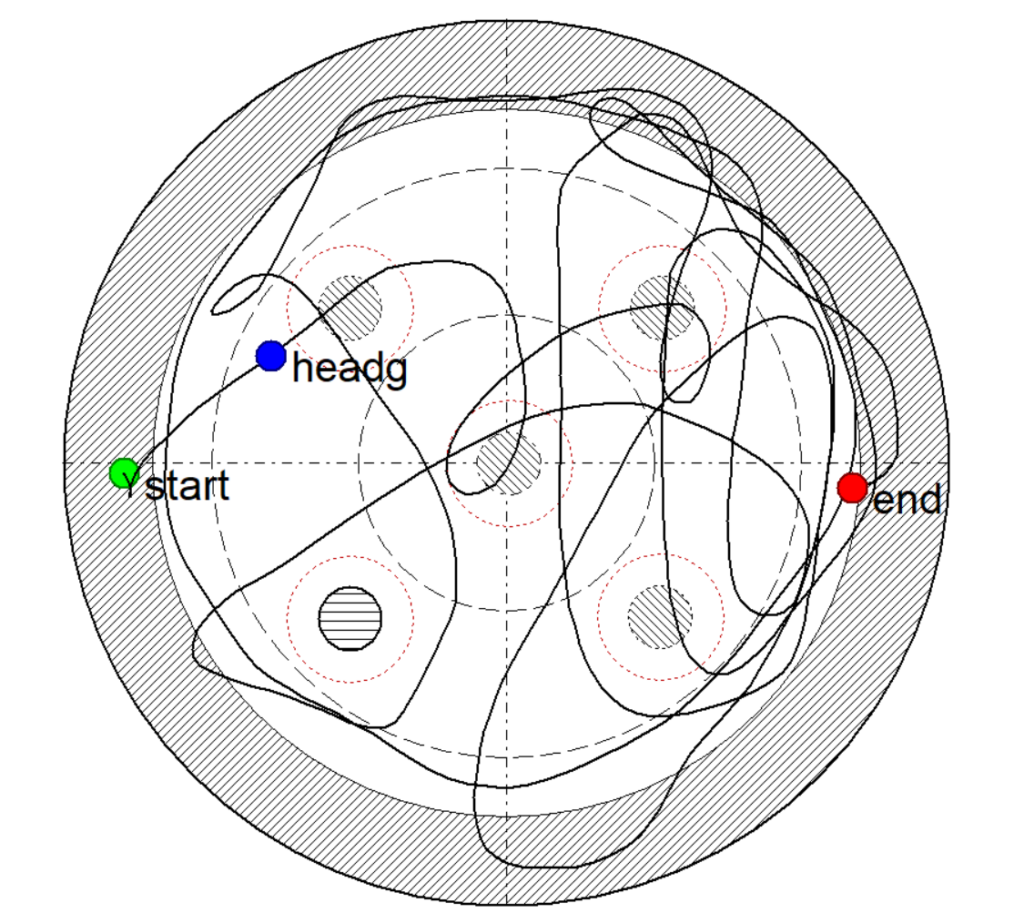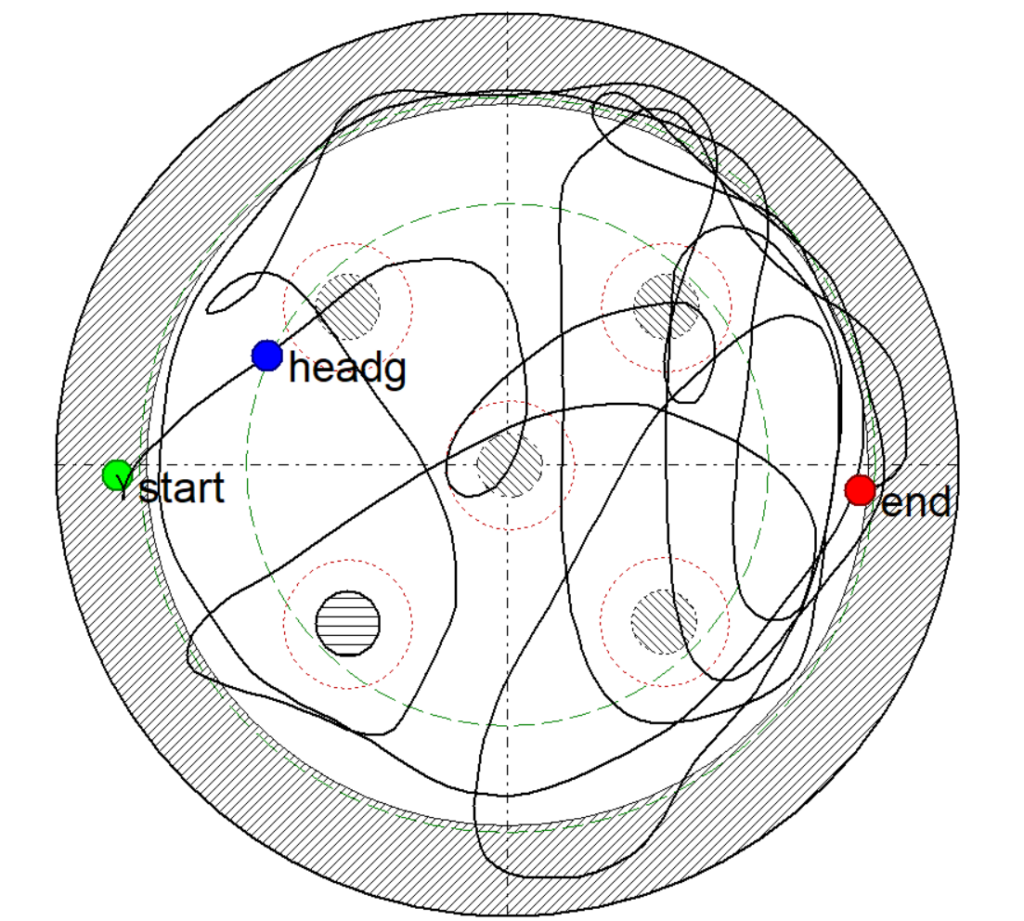Circular zones can be helpful in the following cases, which are not covered by more commonly used metrics:
- Analysis of the early stages of learning, when subjects may not yet be showing quadrant-specific preferences but are showing a transition away from initial thigmotaxis, revealing whether the subject is moving away from the pool wall just to the intermediate zone or to the entire pool;
- Evaluating anxiety or disengagement, where subjects may tend to swim close to the wall unless and until feeling more comfortable or re-engaging in the task;
- Detecting spatial preference or avoidance by comparing relative occupancy of inner and outer pool areas without geometric distortion.
In the HVS Image analysis you can either use the default option of ‘equi-spaced’ circular zones – with the divisions between the three zones being at equal intervals between the center and the outer edge of the pool – or check a box for ‘equi-area’ – to position the divisions such that each zone is of equal area. Which of these to use depends on what questions you are asking:

Equally spaced divisions for circular zones:
With equi-spaced circular zones, the width of each ring is the same from the center outward (e.g., if the pool diameter is 180 cm, the width of each ring, and radius of the central circular zone, will be 60 cm), so the outer zone covers much more area than the inner zone. Equi-spaced zones are therefore particularly useful when quantifying to what extent subjects move away from the poolside, for example:
- Tracking learning progression in early trials, as during training subjects may shift from hugging the wall to exploring more central zones.
- Quantifying gradual movement away from the wall when evaluating anxiety or disengagement.
While analysis of thigmotaxis will show to what extent the subject stayed close to the pool wall or not, circular zone analysis is useful if you’d like added insights into whether the subject moved inward gradually, still avoiding the central area, or moved straight from thigmotaxis to exploring more fully.
So if your goal is to find to what extent the subject is moving away from the wall and into the pool center, then equally spaced zones are helpful. Keep in mind that the zones are of different sizes and that the outer zone naturally dominates by its larger area.

Circular zones of equal areas:
With equi-area circular zones, each concentric ring covers the same surface area of the pool. Seeing them on the path plot, the outer ring is narrow, the inner circle is wide, and the ring between them has a width that is wider than that of the outer ring and narrower than the diameter of the inner circle.
If your goal is to find to what extent the subject is using the pool surface evenly, then the unequal zone areas of the equi-distant zones would distort the answer – subjects might spend more time in the outer zone simply because it’s bigger, rather than due to favoring that region behaviorally.
So again, while analysis of thigmotaxis can show to what extent the subject stayed close to the pool wall or not, equi-area zone analysis allows you to compare the percentage of the trial time spent in an outer ring whose size is equal to that of central and intermediate zones. This may be useful in:
- Assessing use of space without bias, comparing relative occupancy without geometric distortion.
- Detecting spatial preference or avoidance, for example if a subject avoids the inner zone more than would be expected by chance.
- Quantifying overall search distribution – are subjects using the whole pool or staying in specific regions?
Some of the published papers using these measures include:
Rats with ventral hippocampal damage are impaired at various forms of learning including conditioned inhibition, spatial navigation, and discriminative fear conditioning to similar contexts, McDonald et al, Behavioural Brain Research
Visual acuity in the water maze: sensitivity to muscarinic receptor blockade in rats and mice, Ronison et al, Behavioural Brain Research
Entorhinal-perirhinal lesions impair performance of rats on two versions of place learning in the Morris water maze, Nagahara et al, Behavioral Neuroscience